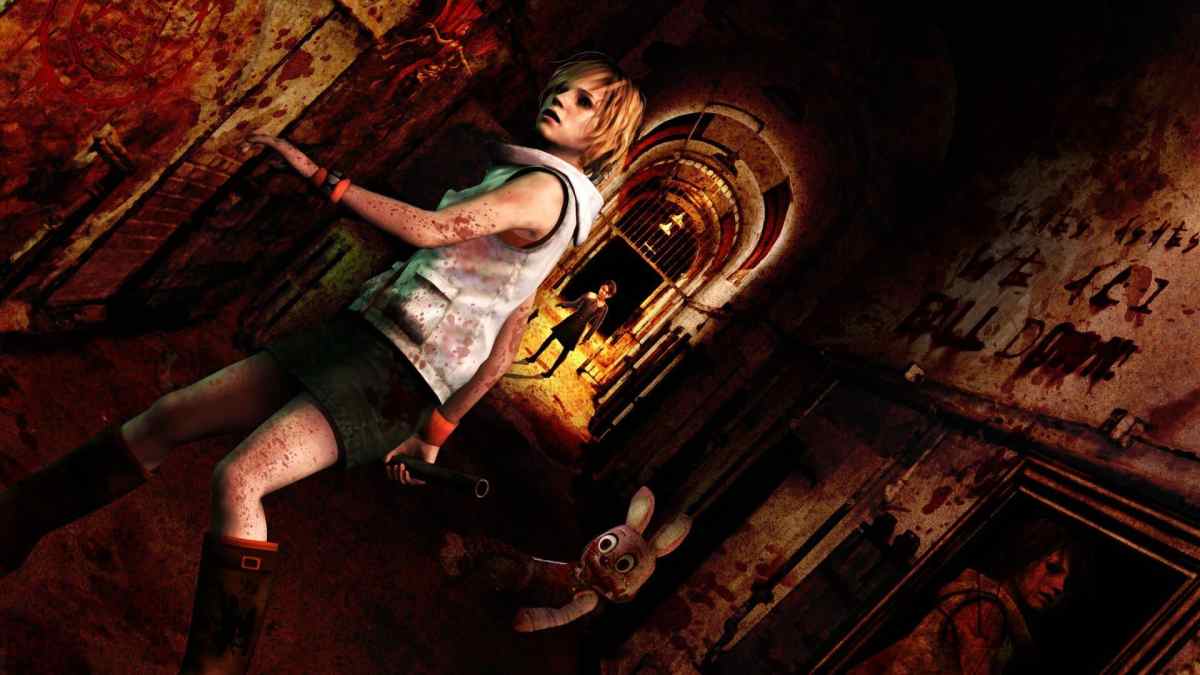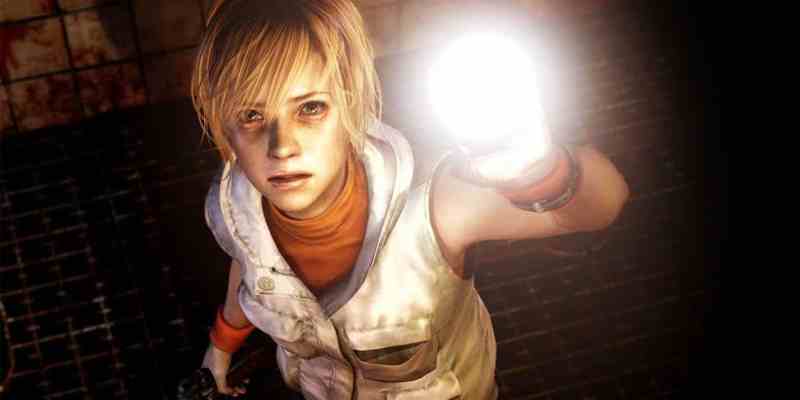Pregnancy and childbirth are daunting prospects even under the most ideal circumstances. In less than ideal scenarios, you get your MTV’s Teen Moms, your alien implantation fetishes, and the ubiquitous fear and anxiety among teenage girls of the unplanned — or forced — pregnancy. In Konami’s Silent Hill 3, the protagonist Heather Mason is tormented by the latter two. Her forced pregnancy by Silent Hill’s cult is violating, horrific, inhumane, and parasitically life-threatening, and the overwhelming dread it causes her is present everywhere in the game, from creature design to artwork and thematic content.
Silent Hill 3 takes place 15 years after the original game, in which Harry Mason prevented a horrific god from being born into the world through Alessa — a young girl who was forcibly impregnated and then burned alive by her mother in ritual sacrifice. In the aftermath, Harry came into possession of a new daughter, the reincarnation of Alessa and Silent Hill 3 protagonist Heather Mason. Unfortunately for her, the first failed attempt at birthing their god did not deter Silent Hill’s cult, the Order. Rather, it emboldened their second wave of acolytes, and upon finding her father murdered in their apartment, Heather swiftly learns that the cycle has begun anew and a god born of hatred and rage has been put inside her, as it was in her prior life.
Silent Hill 3 goes out of its way to entwine forced, traumatic pregnancy with toxic cycles of birth and rebirth. The cycle was delayed by Harry Mason, but as made evident in some game over screens where the creature Valtiel drags Heather’s body away to resurrect her, it was far from broken. This revelation forces Heather to combat her fear and rage long enough to ultimately kill a deformed, evil god made in her own image in an artificial womb, watched by Valtiel, her infernal midwife.
Unlike Silent Hill 2, which is renowned for its subtlety and vastness of theme, Silent Hill 3 wears its fear and dread on its sleeve. Two of the most constant enemy types are Numb Bodies and Insane Cancers, representative of penises/sperm and unwanted internal growth respectively. Then you have the Pendulums, spinning creatures with knives for limbs, that exist to showcase the perpetual cycle of violation by the cult and its abuse and torture of Alessa/Cheryl/Heather.
Even more on the nose, your first boss is a massive, pulsating phallic worm that goes in and out of holes in the depths of the fleshy body of the otherworld mall.
Meanwhile, Heather’s demeanor and personality transform to somewhere between partum depression and extreme hormonal rage. To be able to function and carry on alone, in sometimes crippling physical pain, and being treated like nothing more than an incubator for a demon fetus, she adopts an emotional shield of black humor and aggressive verbal ripostes. This makes her the only character in Silent Hill to essentially give zero fucks about everything and everyone around her, whether it’s asking Claudia Wolf, “Who cares?” when she introduces herself or seeing Leonard Wolf emerge as a twisted flesh monster and asking, “Is anyone in this place normal?” In a series where we mainly follow grown, physically capable men, it’s impressive that the protagonist with the best poker face in front of absolute terror is a teenage girl with a body-destroying pregnancy.
Heather’s incredible capacity to put on a defiant mask is her strongest weapon against the suffering of all of her personalities from past lives. Throughout the game, she braves the fear of failing, the fear of becoming a hate-filled monster, and the fear of birthing something that will perpetuate the toxic cycle of her existence. In gameplay, the representation of that toxic cycle is the apocalyptic god, but thematically Heather’s fear also encompasses continuing the bloodline of her toxic families. In her former life, her mother Dahlia burned her alive in a fit of madness. In this life, her father Harry wondered in his solitude if he should strangle his daughter to death — the dark side of a normally loving dad grappling with raising a dangerous child.

In refusing to birth the cult’s god, Heather breaks the wheel of forced pregnancy, sacrifice, and human slaughter wrought by the religious Order since its founding. The god you fight — the god the Order wants — has no womb, no warmth, no life but what it steals from the physical life and joy of its host. To fight her, you even have to jump down through a rusty bloodstained vagina in the altar of the cult’s chapel. Even in their own place of worship and brainwashing, the true nature of the cycle they’ve been trying to bring into the world can’t be hidden. It’s pain, it’s death, it’s the torture and rending of the bodies of young women.
In killing the god of the cult, Heather kills the evil within her and in her past. She takes back the agency and control over her own life, soul, and body. Then, and only then, does she allow herself to mourn, to finally cry out, “Daddy…”
In a time with increasing hate and toxicity, Heather Mason is a worthwhile example of resisting hatred and breaking old cycles of exploitation and abuse, and she displays how it is okay to feel and mourn through it all. Even if it does take a little dark humor to do so.
